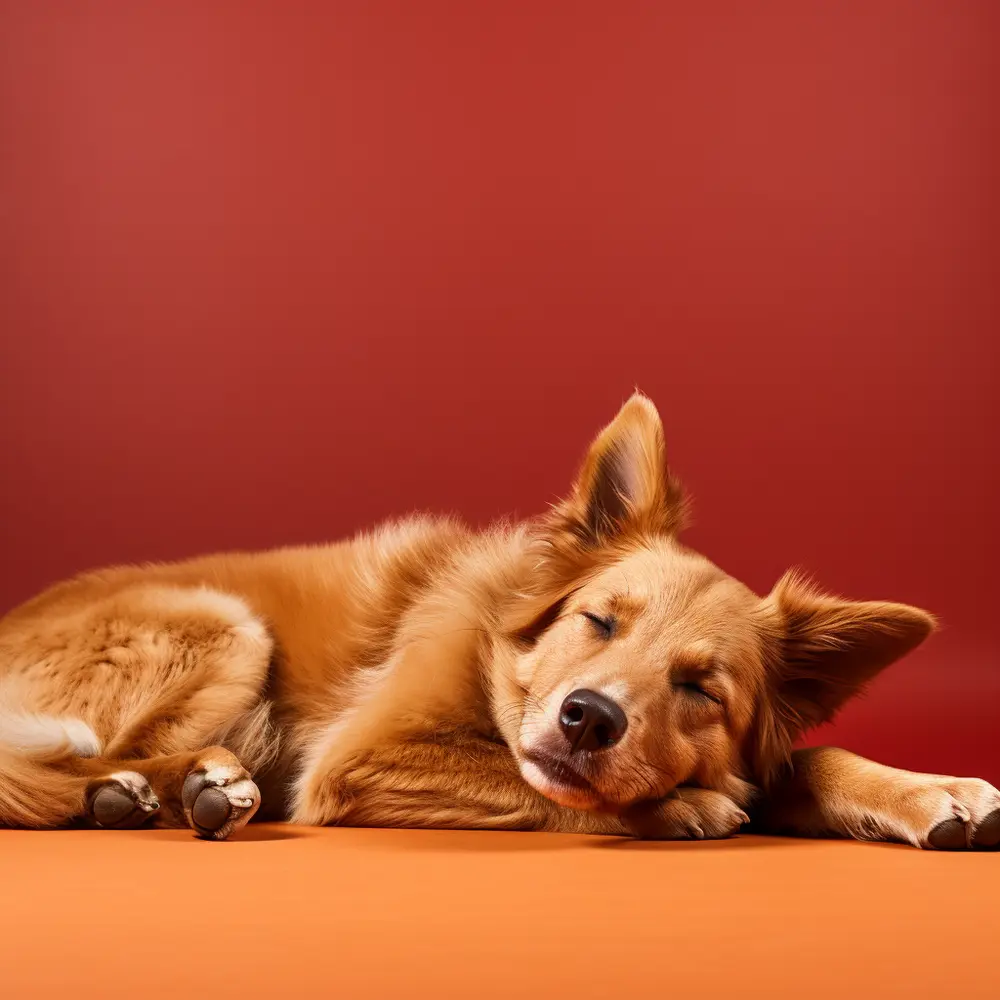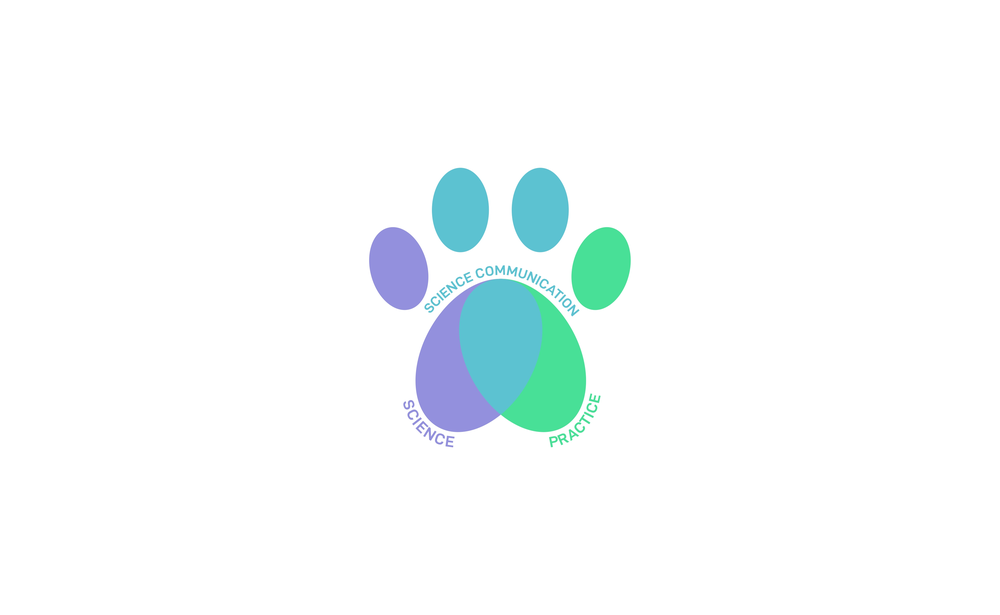Table of Contents:
Understanding Your Dog's Sleep Cycle
Just like humans, our dogs go through various stages of sleep, from light dozing to deep slumber. Understanding your dog's sleep cycle is key to recognising if your pet is enjoying quality rest or if they might be struggling with disturbances in their sleep, such as nightmares. A typical cycle for a dog includes stages of wakefulness, rapid-eye-movement (REM) sleep, and non-REM sleep. It's the REM stage where most dreaming occurs, and this stage is essential for your dog's cognitive processes.
While a dog's sleep cycle shares similarities with that of a human's, there are differences in duration and frequency. Dogs enter the REM stage of sleep much more quickly than humans and have shorter, more frequent sleep cycles. This rapid entry into REM sleep suggests that dreaming is a vital part of a dog's day, despite the shorter time spent in this phase compared to humans.
Factors that affect a dog’s sleep include age, breed, and activity level. Puppies and older dogs, for instance, tend to sleep more than adult dogs. Larger breeds might need more rest to recover from their day, while smaller breeds can have more frequent but shorter sleep cycles. By paying attention to these unique patterns and tailoring your dog's schedule and environment to their needs, you can help support their natural sleep rhythm and overall wellbeing.
The Science Behind Canine Dreams
The enigma of what occurs in our dog’s mind during sleep has long intrigued scientists and pet owners alike. Research suggests that canines, much like their human companions, have the ability to experience dreams. Studies on brain activity have shown that dogs exhibit patterns similar to those found in humans during the dreaming phase of their sleep cycle.
When our dogs enter the REM stage of sleep, their brain waves begin to show a complex set of activities consistent with dreaming. This stage is characterized by random rapid movement of the eyes, which is where the REM sleep gets its name. At this time, the rest of the body typically experiences a form of temporary paralysis, which prevents dogs from acting out their dreams. However, this does not always work perfectly, which leads to the occasional twitching and paw paddling that we observe.
The content of a dog’s dream is still a subject of speculation, though many experts believe they likely dream about everyday experiences, such as playing or chasing. This theory is bolstered by the observation that dogs often move their limbs as if running or make noises as though they are on a spirited chase during the REM stage of sleep.
Dreams, it is hypothesised, play a role in processing the day’s experiences and storing memories. For canines, whose survival once heavily depended on learning from their environment, the dream state might be essential for their cognitive development and emotional health.
Advantages and Disadvantages of Studying Dog Sleep Behaviors
| Pros of Understanding Canine Sleep Patterns | Cons of Understanding Canine Sleep Patterns |
|---|---|
| Enhances bonding between owner and dog by addressing sleep issues | Overanalyzing sleep patterns may lead to unnecessary concerns |
| Can help identify health issues early on | Misinterpretation of behaviors leading to incorrect assessments |
| Improves dog's overall well-being and sleep quality | Requires time and effort to monitor and understand patterns |
| Allows for adjustments in routine to better suit the dog's needs | Limited scientific research available for accurate analysis |
Is My Dog Having a Nightmare?
Witnessing your dog's sleep can sometimes be a cause for concern, particularly if they seem to be in distress. You might ask yourself, "Is my dog having a nightmare?" If you notice your dog whining, growling, or even barking while asleep, they could be having an unpleasant dream. While these signs can indicate a nightmare, they are also part of the normal spectrum of dreaming and don't necessarily mean your dog is experiencing distress.
It's essential to differentiate between normal dream behavior and something more serious, like a seizure. Dogs having a nightmare may have irregular breathing or a slight twitching of the muscles, but these are usually not cause for alarm. However, if the movements are overly vigorous and accompanied by uncontrollable urination or defecation, it might be time to consult a professional.
If you're convinced your dog is having a nightmare, it's important to resist the urge to wake them up. Startling a dog out of a dream could lead to confusion or defensive aggression. Instead, ensure they are comfortable and safe, remaining patient until they wake naturally. Providing a serene sleep environment and a regular routine can help minimize the chances of nightmares occurring.
After episodes that you suspect were nightmares, observe your dog's behavior once they're awake. Are they anxious or do they quickly return to their normal self? Keeping a sleep diary can help you identify patterns or triggers that may be causing distressful dreams, such as changes in their environment or routine. Armed with this information, you can create a better sleep strategy for your companion.
Signs Your Dog Might Be Dreaming
Determining whether your dog is in the midst of a dream can be both intriguing and entertaining. While we cannot ask our dogs to recount their dreams, there are physical signs that may indicate they are indeed dreaming. Typical signals include subtle movements of the limbs, as if your dog is running or chasing. You may also observe their ears twitching or their eyelids moving, reflecting the activity going on behind closed eyes.
Additionally, dogs might exhibit facial muscle twitches, displaying diverse expressions ranging from subtle twitches to what appears like smiling or frowning. These involuntary movements might give us clues as to what they are experiencing in their dream world. Gentle barking or whimpering sounds can also be heard as they dream about past events or instinctual behaviours.
If you see your dog exhibiting these behaviours, it's usually not something to worry about. These are normal occurrences and indicate that your dog is in a deep stage of sleep, possibly dreaming about their day's adventures. It's best to let them sleep undisturbed, to ensure they get the rest they need for their physical and mental health.
Why Do Dogs Move and Make Noises in Their Sleep?
The movements and sounds your dog makes while sleeping have fascinated dog owners and scientists alike. These behaviours are often the physical manifestations of what's happening in the dog's brain during sleep. Even though temporary paralysis typically occurs during the REM stage of sleep to prevent dogs from acting out their dreams, this mechanism is not always foolproof. Occasional slips can result in your dog's limbs twitching or making paddling motions as if they're running in their sleep.
Noises such as barks, growls, or whimpers are part of this same phenomenon. When dogs make noises in their sleep, it's believed that they may be interacting with dream characters or reacting to dream situations. These auditory outputs can range from soft murmurs to louder, more urgent noises, mirroring the intensity of the dream content.
Such movements and noises are a normal part of your dog's sleep and generally do not indicate distress. They can offer a glimpse into the rich inner life of your dog's mind, as their sleeping brain processes information and emotions from their wakeful experiences. As pet owners, observing these behaviours can deepen our understanding and connection with our faithful companions.
The Importance of REM Sleep for Dogs
REM sleep, or rapid eye movement sleep, is a crucial phase for both humans and dogs. This is the period where the brain is almost as active as it is during wakefulness. For dogs, REM sleep is believed to be essential for maintaining psychological health and neurological function. It's a time when the mental activities of the day are processed and stored as memories, which is vital for learning and adaptation.
The exact reason why REM sleep is so important for canines is not fully understood, yet it's clear that this stage of the sleep cycle has restorative properties for a dog's brain. During this phase, a dog's brain can sort through and make sense of the vast amounts of information it receives daily. Ensuring your dog has ample, uninterrupted periods of REM sleep can help in their overall development and behavioural conditioning.
Given its significance, disturbances during REM sleep can be detrimental to a dog's health. Lack of quality REM sleep may lead to irritability, decreased cognitive functioning, and stress. In puppies a lack of sleep will quickly lead to hyperactivity including mouthing and destructive behaviour. Owners should be mindful of their dog's sleep patterns and strive to create an environment conducive to uninterrupted sleep routines. Observing the quality of your dog's REM phase can also offer insight into their well-being and alert you to potential health issues that might require professional attention.
How to Ensure a Good Night's Sleep for Your Dog
Ensuring your dog has a good night's sleep is pivotal for their health and happiness. A restful night can be achieved by taking a few measures that cater to your dog's comfort and routine. Start by providing a comfortable bed in a quiet, warm and safe spot away from the hustle and bustle of the household. The bed should be supportive and big enough for them to stretch out or curl up, depending on their preference.
Establishing a consistent routine can also contribute significantly to a better sleep pattern for your dog. Consistent feeding times, toilet breaks, and a set bedtime can help regulate their internal clock. Engaging your dog in adequate exercise during the day will also ensure they are physically tired and ready to rest at night.
Furthermore, minimise disruptions during the night. This may mean keeping the environment as quiet as possible and avoiding unnecessary lights which could disturb your dog's natural sleep cycle. It's also recommended to limit food and water intake close to bedtime to prevent midnight bathroom needs.
Lastly, creating a calming pre-sleep routine, such as a gentle petting session or a quiet cuddle, can signal to your dog that it's time to settle down for the night. This can help ease any anxiety and foster a peaceful state conducive to sleep. By following these steps, you can help your dog achieve the deep, replenishing sleep they need to thrive.
When to Be Concerned About Your Dog's Sleep Behaviour
While variations in sleep behaviour are normal for dogs, certain signs warrant concern and may require a professional consultation. If you notice significant changes in your dog's sleep patterns, such as an increase or decrease in sleep duration, it could be an indication of underlying problems.
Excessive sleepiness or lethargy during the day might suggest medical conditions such as hypothyroidism or other hormonal imbalances. Conversely, restlessness or insomnia could be signs of discomfort, pain, or anxiety. Be alert to changes such as these, especially if they are sudden.
Snoring in dogs isn't uncommon, particularly in brachycephalic breeds with shorter snouts. However, if snoring becomes unusually loud, occurs more frequently, or is accompanied by breathing difficulties, it could suggest respiratory issues.
If your dog frequently wakes up from sleep startled or confused, this might be a symptom of a cognitive disorder, especially in ageing dogs. Also, excessive vocalisation or movement during sleep that leads to waking could point towards traumatic stress or neurological disorders.
Always keep a close eye on your dog's sleeping habits and behaviours. Acknowledge any persistent or unusual changes and discuss them with your vet. They may suggest a sleep study, changes to your dog's routine, or further medical investigations to ensure your dog maintains a healthy sleep pattern.
Creating a Comfortable Sleep Environment for Your Dog
Adequate sleep is as crucial for your dog's health as it is for your own. Therefore, creating an inviting and secure sleep environment is an important aspect of canine care. To ensure that your dog slumbers in comfort, select a suitable pet bed that provides proper insulation from cold floors and sufficient cushioning to protect joints.
The location of your dog's bed plays a significant role in sleep quality. Choose a quiet corner of your home where disturbances are minimised. This area should be free of drafts and not too close to high-traffic zones. Some dogs may prefer a crate or a den-like space, which can provide a sense of security, while others might simply enjoy a cosy spot near their family members.
Consider the ambient temperature of the room; it should be kept at a comfortable level as extreme temperatures can disrupt sleep. Add blankets or a heating pad for colder months and ensure ample ventilation during warmer seasons.
Lighting can also affect your dog's ability to sleep well. Dimming the lights in the evening can help signal that it's time to wind down. If your dog seems particularly sensitive to light, try using blackout curtains or a cover over their crate.
Incorporating gentle sounds could help soothe your dog to sleep. Soft music, white noise machines, or the quiet humming of a fan can prevent startling noises from waking them. Every dog is unique, and observing your dog's preferences will guide you in creating the ideal sleep environment tailored to their needs.
Professional Insights on Canine Sleep Patterns
Experts in canine behaviour and veterinary medicine provide valuable insights into dog sleep patterns, highlighting their complex nature. Professionals note that sleep is not only a time of rest but also key to a dog's learning and memory consolidation. These insights can help owners better understand their pets' needs and identify any deviations from normal sleep behaviour.
Veterinary scientists have found correlations between sleep quality and overall health in dogs. A well-rested dog is more likely to have a strong immune system, steady temperament, and effective cognitive function. On the other hand, disturbed or inadequate sleep may be symptomatic of health issues.
Behaviourists emphasise the role of sleep in a dog's ability to process the day's events and to rejuvenate emotionally as well as physically. They advocate for a stable, stress-free environment that promotes consistent sleep patterns, thus aiding in behaviour training and reducing anxiety-related issues.
Many professionals also underline the importance of addressing sleep disorders promptly. They often point out that, while occasional restless nights are normal, persistent restlessness, or changes in sleep should be discussed with a vet, as they could be early indicators of various conditions.
The collective wisdom of these experts is clear: prioritising good sleep hygiene for your dog is an investment in their health and happiness. Owners are encouraged to observe their dog's sleep patterns and seek professional advice should any concerns arise.
FAQ: Uncovering the Mysteries of Dog Sleep
Do dogs experience REM sleep like humans?
Yes, dogs have a similar sleep cycle to humans, including the REM (Rapid Eye Movement) phase. It is during this phase that dogs are believed to dream.
How can you tell if a dog is dreaming?
Physical signs such as twitching, paddling movements, and quiet barking or whining may indicate that a dog is dreaming during the REM stage of sleep.
Is it bad to wake a dog up from a dream?
It's generally recommended not to wake a dog from a dream. Dogs can be disoriented or startled if woken abruptly, which could lead to confusion or defensive behaviors.
Can dogs have nightmares?
Dogs can have nightmares, and they may show signs of distress such as whining, growling, or shaking in their sleep. However, these are also normal behaviors during dreaming and don't necessarily indicate a nightmare.
How can I ensure my dog has a good sleep environment?
Provide a comfortable bed in a quiet and safe area, establish a consistent routine, ensure the room temperature is comfortable, and minimize nighttime disruptions to promote quality sleep for your dog.








